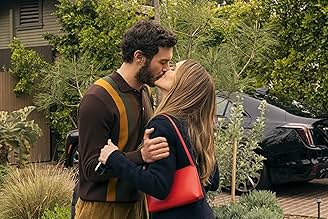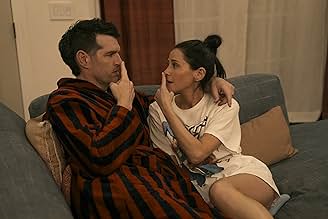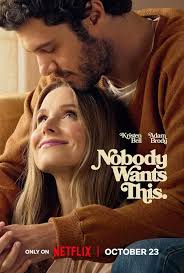This guide gives you a way to see whether the series works for your place. It’s up there on Netflix to watch anytime.
Overview
Nobody Wants This centers on Joanne – a blunt podcast host – who crosses paths with Noah, a rabbi adjusting to life after a breakup.

They start liking one another even though their backgrounds clash in big ways.
Their families don’t approve, yet their beliefs make things even tougher – each one’s pulled by what their world expects. One side resists change while the other clings to tradition, still they try to hold on despite the weight around them.
The rating shows TV-MA.
Treat this like it’s meant for grown-ups.
Content Warnings
Brace yourself for blunt talk when debates kick off.
Get ready for tough topics like belief, who you are, how people connect, along with stress that comes from relatives.
No serious fights or shocking images – yet tension piles up now and then.
Sex comes up here. The mood’s grown-up – though nothing’s shown.

Social drinking shows up.
If your teen gets uncomfortable with intense emotional stuff, maybe skip this one.
Episode Length and Age Suitability
Episodes last anywhere from twenty up to thirty minutes.
The show fits best with folks aged seventeen or more, also grown-ups.
Check a single episode first – see if the vibe fits your crew.
Youth might struggle to understand these ideas clearly.
My Reactions and Scenes I Noticed
In episode one, Joanne wonders out loud whether Noah expects her to convert. His silence hits harder than the words she spoke. That moment? It didn’t seem acted – more like something lived through.
Later on, I caught a joke during Joanne’s podcast – her sister tossed in a cheeky line about closeness. It got a laugh, but I noticed right away the episode blends laughs with deeper talks about adult stuff.
That dinner with both families stuck in my mind. Quiet glances plus tight grins suggested doubt, stress, yet also wariness. I was uneasy – but it did me good.
The blend of laughs with realness made the story feel heavy. Your kid will catch grown-up jokes while seeing tension unfold right alongside.

Talking Points with Your Teen
Find out if culture affects how people connect.
Wonder if faith-based or family pressures ought to shape grown-up love lives.
Find out how respect blends with give-and-take in relationships where partners come from different backgrounds.
Check if joking about closeness helps honest talks or messes up limits.
Asking straight-up questions pushes people to think harder instead of just watching quietly.
Monitoring Tips for Parents
Keep an eye on how your teen acts once they’ve seen it.
If they seem stressed or over their head, have a chat before things go down again.
When they echo grown-up jokes in a sketchy situation, shift the vibe immediately.
If they’re puzzled about faith or who they are, talk it through with them – maybe that’ll help clear things up.
Check it out side by side in one spot. Hit stop whenever it makes sense. Keep talking without holding back.
Positive Elements
The show brings out how talking openly matters – also being truthful along the way.
It looks at belief, who you are, giving things up, while also feeling part of something.
There are two grown-ups dealing with actual outcomes, not made-up tension.
It might start a good talk about customs, heritage, yet emotions.
Consider Before Watching
If you’re after light laughs without heavy stuff, then this isn’t for you.
If your teen has a hard time with stuff like cultural clashes, jokes about sex, or harsh words – just hold off.
If your family likes sharp conversations along with solid character development, this one’s a match.
Pick limits ahead of time – no watching alone, hit pause if something’s unclear, think it over once you’re done.
Final Guidance
Nobody Wants This mixes laughs with the stress of dating while tackling self-discovery and who you really are – humor, awkward moments, and real talk show up in just the right amounts.
Your part shapes how your teen handles grown-up topics by offering steady guidance while keeping the conversation flowing naturally.
If you pick this name, treat it like an opening to show how feelings grow, connect with others, yet honor how people see things differently.
This series fits families open to deep talks along with real feelings. Kids require your attention to handle the material in a thoughtful way.


